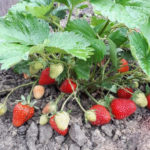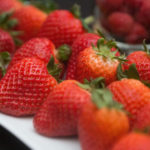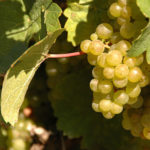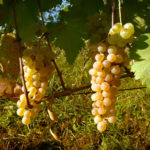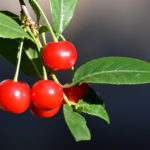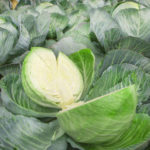Cherry variety Shubinka
In central Russia, the Shubinka cherry has been popular for quite a long time. The origin of this variety is unknown, most likely, it belongs to folk selection. But our heroine is included in the State Register of Breeding Achievements of Russia. Variety trials began in 1947, after which, in 1959, the variety was entered in the register with an admission in the Central, North-West and Volga-Vyatka regions. The originators were the Federal State Budgetary Scientific Institution "All-Russian Institute of Selection and Technology of Horticulture and Nursery" and the Federal State Budgetary Scientific Institution "Federal Research Center All-Russian Institute of Plant Genetic Resources. N.I. Vavilov ". It is believed that it was from Shubinka that identical varieties originated - Krasnopakharskaya and Korostynskaya.
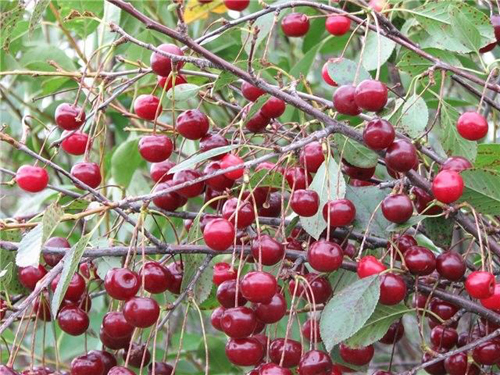
Description
The tree has sufficient growth vigor. The height of an adult cherry exceeds four meters. The wide-pyramidal crown of medium density becomes weeping with age. The main branches are thick, dark brown, the shoots are medium and thin, with a greenish bark and a grayish bloom. The leaves are thin, regular in size, oval in shape, with a pointed tip and a wedge-shaped base. The petiole is average in all respects. Fruiting occurs like bush cherries - on annual shoots. The flowers are white, the corolla forms petals that are loosely pressed to each other.
The berries of the variety are small, usually their weight ranges from 2.0 to 2.5 grams, but not more than 3.0 grams. The shape of the fruit is flat-round, the abdominal suture is well defined, the funnel is shallow. The skin is thin, glossy, dark red. The pulp also has a dark red color, rather juicy, medium-dense, somewhat loose in consistency. The taste is ordinary, sour, with a light bitter-astringent aftertaste, strong cherry aroma. Experts say that the longer cherries ripen on a branch, the more sugar they accumulate, which means they become tastier. The peduncle is long and thin, the separation from the fruit is wet. The stone is round in shape, average in size, it is difficult to separate from the pulp.
Characteristics
- Shubinka's early maturity is not very high. At the time of fruiting, self-rooted trees enter only 5 - 6 years. But grafting reduces the waiting period for cherry harvest to 4 years;
- ripening period - late or medium late, depending on growing conditions. Usually the berries ripen in mid-August, but there is information that in warmer climates the harvest begins at the end of July or early August;
- annual fruiting. Moderate to good productivity: yield about 8 kg per tree, maximum 16 kg. According to VNIISPK, from 6 to 12 tons are removed from one hectare;
- the lifespan of the tree is about 30 years;
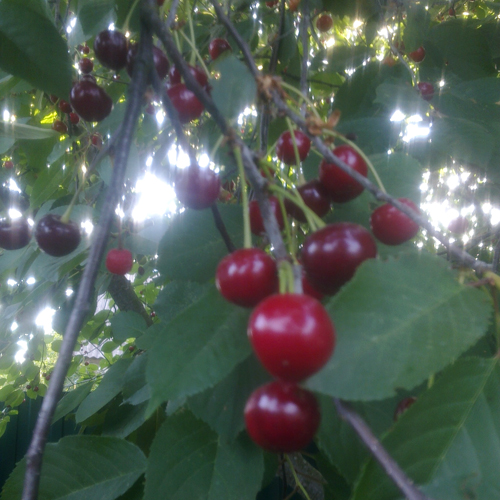
- the variety is recognized as partially self-fertile, therefore, varieties should be planted in the garden that bloom at the same time as our heroine, which will serve as a pollinator. The most successful choice for this purpose: Moscow griot, Vladimirskaya, Saika, Lyubskaya, Consumer goods black;
- ripe fruits are kept on the branches for a long time, which is a definite plus. In addition, cherries ripen gradually, so the harvest may take until early September;
- frost resistance of the culture is excellent. Trees tolerate temperatures as low as -32 ° C. The plant is well resistant to the complex of environmental influences during the winter and early spring periods;
- Shubinka is patient with dry periods;
- the immunity is average. The ability of the species to resist moniliosis is noted. But coccomycosis should be feared, especially in wet years, when favorable conditions are created for the development of the fungus;
- due to the wet separation and loose consistency, the berries do not tolerate transportation well;
- the way of use is universal. Cherry is eaten in its natural form, but it has gained great popularity as a culture for processing. The fruits make wonderful jam, compote, liqueur.
Agrotechnics
In the regions of tolerance, the planting of the variety is preferred to be carried out in the spring.The site is chosen sunny, well-ventilated, but protected from the winds prevailing in winter. The culture is not picky about soils, but it develops best on loose and fertile loams. The plant does not like flooded or low-lying places. In such areas, the tree is often sick, stops developing, bears fruit poorly. To increase the resistance of cherries to diseases, preventive treatments should be carried out in time. Keep in mind that pruning is a good way to increase yields and prevent disease.
Shubinka is called a garden classic for a reason. Over the years, it continues to grow in many family gardens, even as new and improved varieties have emerged. Indeed, our heroine does not fail. She has excellent frost resistance, albeit low, but stable yield and universal purpose. In addition, it serves as an excellent pollinator. Yes, and undemanding in leaving. Of course, this cherry also has disadvantages, which are expressed in a mediocre taste, wet tear-off and insufficient resistance to coccomycosis. But it is worth remembering that the variety is folk, that is, breeders did not conjure over its creation, imparting characteristics to the culture that are unusual for it.
